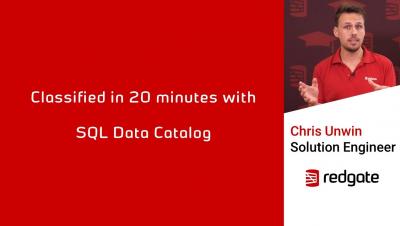Operations | Monitoring | ITSM | DevOps | Cloud
Databases
The latest News and Information on Databases and related technologies.
How to Speed Database Troubleshooting
Identifying Index Fragmentation With SQL Sentry
AdventureWorks, classified in under 20 minutes with SQL Data Catalog
Rapidly Resolve Database Problems With Data Visualization
Introduction to database testing
In software development, processing and storing data in different states reflects the business rules an application is built on. The heart and soul of any software application is the data that is persisted in databases for retrieval and further processing. The database system (SQL or Non-SQL) chosen for an application must serve the required data processing and storage needs of the application.
6 Smart Practices That Optimize Database Performance Monitoring
The best business decisions are backed by data. Companies that constantly collect, analyze, and proficiently store this are more likely to succeed in the long run. An organization's database can be a direct source of revenue. Not only in the sense that data can be sold, but the insights produced can help the business too. Data about customer habits, market trends, etc., can enable a company to optimize its practices and find the most effective way to conduct tasks.
NiCE DB2 smart Management Pack 4.32 released
NiCE DB2 smart Management Pack 4.32 The NiCE DB2 smart Management Pack enables advanced health and performance diagnostics for DB2 databases using the Micro Focus Operations Bridge Manager. Leverage your existing investment, reduce costs, save time, and build efficiencies that will last beyond your expectations. Get the new NiCE smart DB2 Management Pack 4.32 and start advanced Db2 monitoring now. We are looking forward to smartening up your enterprise application monitoring.











